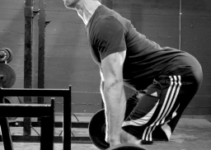You may have seen or heard of powerlifting-centric terms. Things like, “go heavy, or go home”, “shut up and squat” are commonly thrown around to describe an attitude towards lifting. But apart from having been the birthplace of catchy clichés, powerlifting is a very meritorious approach for a beginner to train.
For one, powerlifting targets what are arguably the most important exercises in a lifter’s arsenal. Note, “a lifter’s”, and not “a beginner’s”. The time spent to develop your technique in the compound lifts, the squat, bench press and deadlift, will have very significant impact on your strength when you move on to the more interesting exercises. Personally for myself learning to “stay tight” and brace the core is one of the most important things that literally forms the base of any other exercise.
Check out our article how to get started in competitive powerlifting
Powerlifting also teaches a very important concept that is absolutely essential for long term success in the iron game – that of progression. Adding weight to the bar every week teaches you how to set goals, and ingrains in the lifter a mindset of smashing through those goals. It indoctrinates young lifters with the critical ability to use objective yardsticks of measuring progress: pounds, sets, reps. Not how “full” your muscles looked, or how amazing of a pump you got.
Finally, it teaches you how to train hard. Now, this is not intended to be a cheap shot at bodybuilding buffs or other athletes. It is undeniable that beginners do not know how far they are capable of pushing themselves. Powerlifting tells you that you can hit a certain weight for a certain number of reps; you obey and push yourself towards that goal. You slowly develop the mindset where “everything is possible” and develop the technical competence of grinding a rep, and doing so in a manner which is safe. This will have tremendous impact on your training in the future. You don’t stop when you are tired – you stop when you are done.
Basic routine and template
Personally, a routine I commonly recommend to beginners involve a 3x a week full body split. Credits must go to programmes like starting strength, stronglifts, madcow, and the texas method, all of which I have tried and have drawn inspiration from.
| Monday | Tuesday | Wednesday | Thursday | Friday | Saturday | Sunday |
| Squat 3×5 @80% |
Squat 5×3 @100% |
Squat 5×5 @70% |
||||
| Bench press 5×3 @100% | Bench press 5×5 @70% | Bench press 3×5 @80% | ||||
| Deadlift 3×5 @80% | Deadlift 3×5 @80% | |||||
What do the percentages mean? Look at the ones which says 100%. By 100%, I am referring to a weight which you can do, with proper technique, for the prescribed sets and reps, that is 5×3. The other percentages, 80% and 70%, take reference to this weight. Therefore, if you can squat 5×3 for 200lbs, you will squat 3×5 for 160lbs and 5×5 for 140lbs.
How do you know what is your 100%? Estimate based on your most current performance in the gym. Everything else being equal, it is always better to start off with lighter weights, as the “lightness” will soon be overtaken by your progression through additional weight. In contrast, starting off with heavier weight almost always guarantees faulty technique and subsequently, injury.
The training days are kept low so as to minimize disruption to the life of beginners, persons who have not fully worked training into the life schedules. A 3x a week frequency approach is great for training technique, since lifting is as much a skill as it is a form of exercise. 3x a week also ensures maximization of the adaptive potential of beginners towards relatively light loads.
Progression and execution
To progress, add weight in the smallest denomination available. If you have access to microplates, which allow for even smaller increments, that is the most desirable. Otherwise, this routine is more than capable on its own of sustaining progress for a good 6-10 weeks.
Where adding weight seems impossible, additional volume can be performed. That is to say, that you may opt to perform more repetitions in lieu of weight. I generally like to have beginners do these sets, also known as back-off sets, with lesser weight on the working sets. An example:
5×3 squat @ 200lbs
back off: 1×3 @180lbs
Rest timing should be kept constant. I like having 180 seconds for the squat and deadlift, and 120 seconds for the bench press. Anything more is excessive, at least at this stage.
Transitioning into the future
As you milked the progress out of the program, you may find that you’ve been getting stuck more and more. It may simply be you becoming stronger such that the weights used, at this frequency and volume, is greater than what you can recover from. What I do first, is to reduce the training frequency into a more moderate form, in the form of an upper body/lower body split, which allow for twice a week squatting, benching, and deadlifting. You can find many examples online.
Another method is to swap out certain exercises. For instance, one squat day may be designated for paused squats, or front squats. Flat bench presses can be substituted with shoulder presses, incline presses, dumbbell presses.
Now, get lifting!






